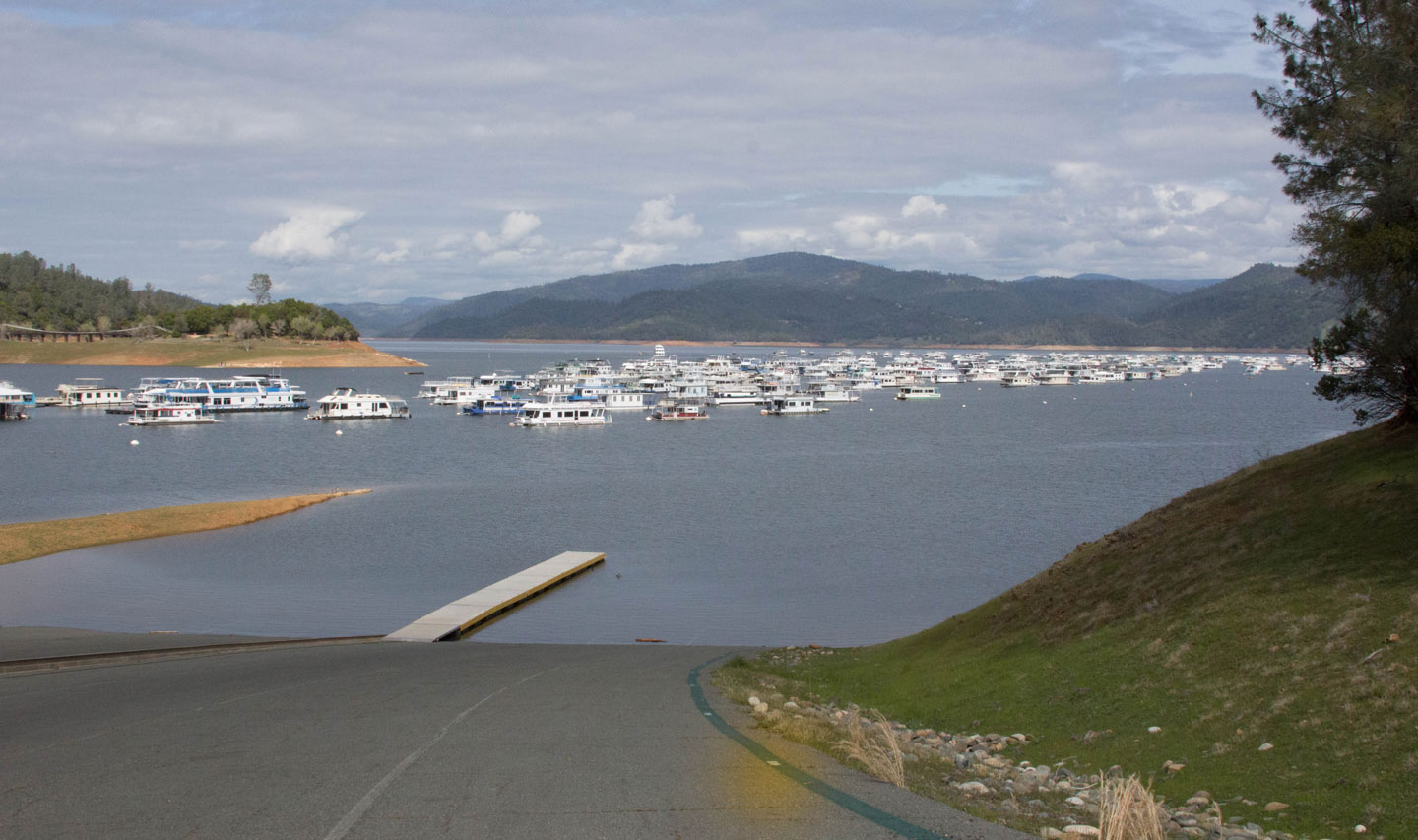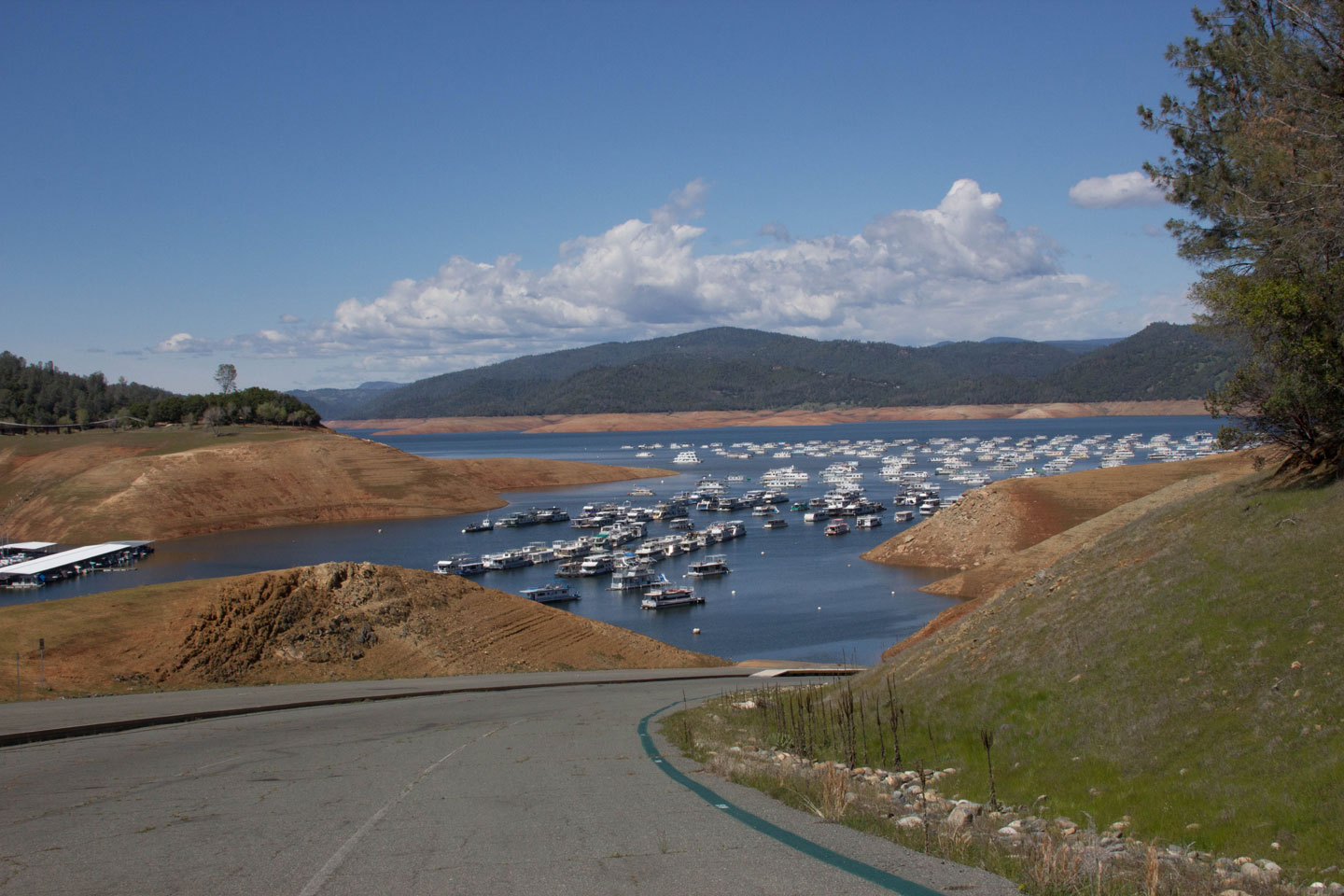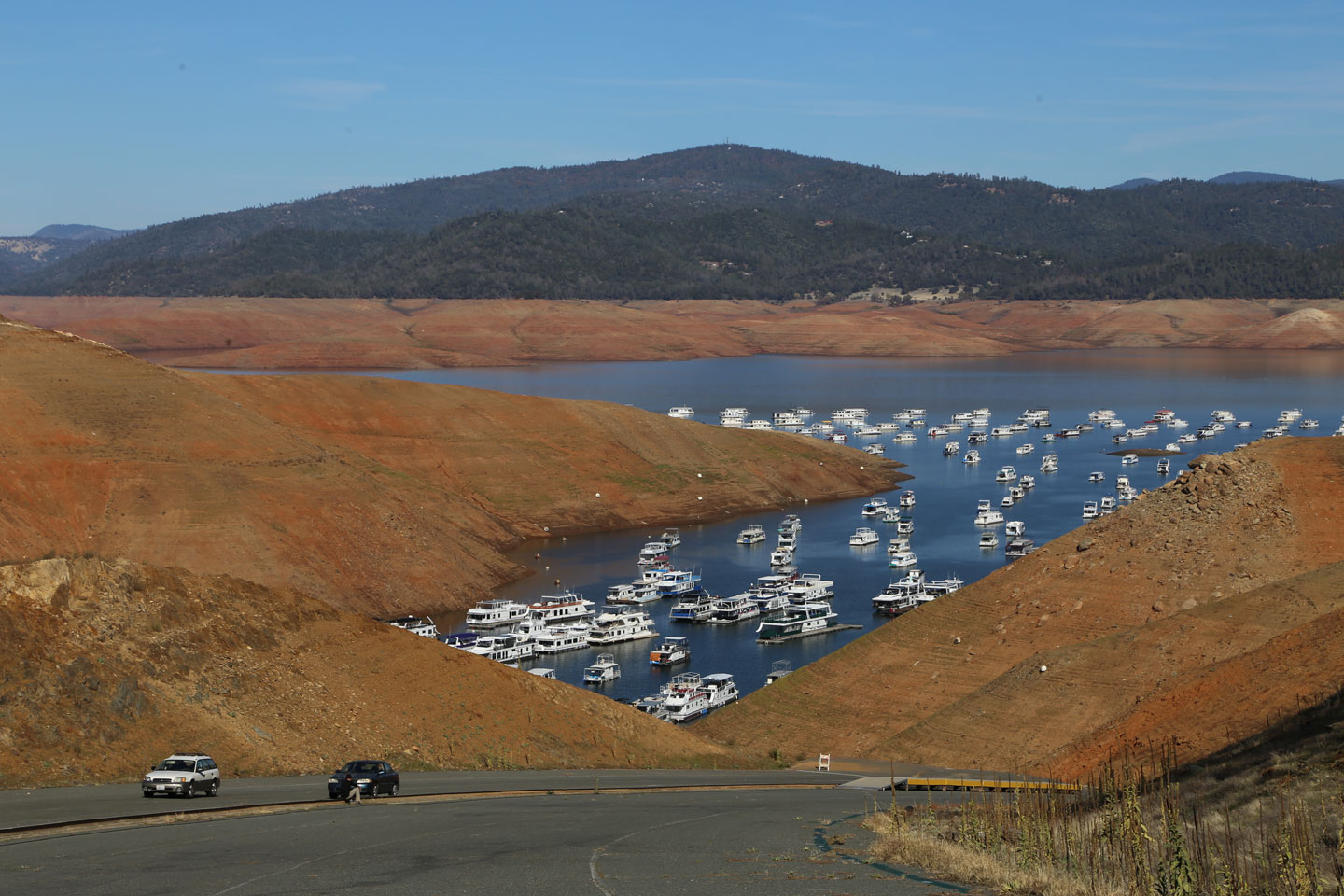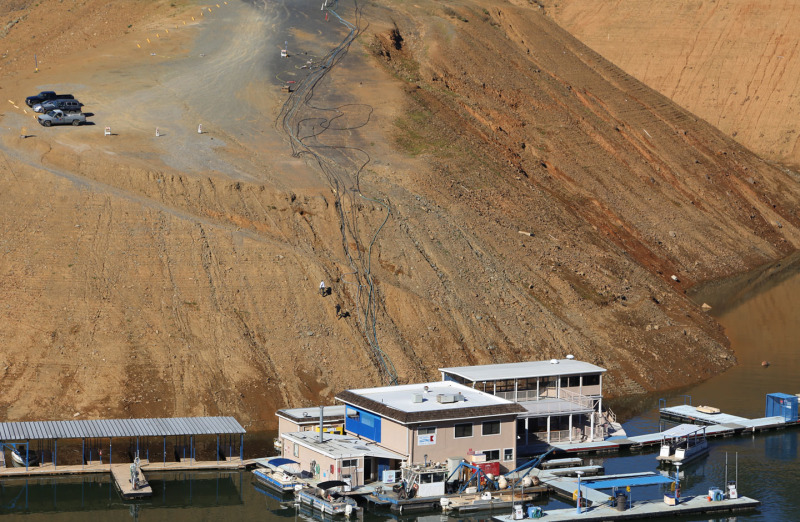At the beginning of this year, Gov. Jerry Brown declared a drought emergency throughout California.
Since then, during the third-driest water year on record, towns have started to run out of water, agencies have enacted mandatory conservation and "drought bears" have even wandered into urban neighborhoods in search of food.
During this time, Lake Oroville, east of Chico in Butte County, has become a sort of drought poster child. It's the second-largest California reservoir after Lake Shasta, and the main reservoir for the State Water Project. Currently, the lake is only 5 feet higher than the record low recorded on Sept. 7, 1977 of 645 feet above sea level.
KQED staff have visited the reservoir several times during the last 20 months. About 16 months ago, Lake Oroville was almost at 90 percent of capacity and the Department of Water Resources was freely releasing supplies. This year, managers cut deliveries to virtually nothing, conserving as much of the reservoir supplies as possible.
In the three photos below, taken in March 2013 and April and November of this year, you can see just how low the lake's water level has dwindled to:



